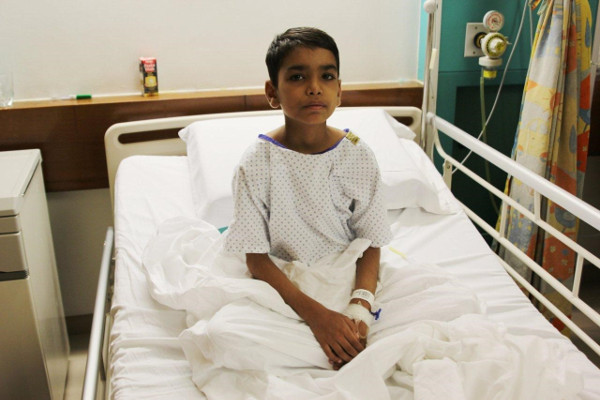In my passion for public health, I wear many hats. I am a physician and a field-worker, professor, and advocate. I split my time between Karachi, Pakistan, and Toronto, Canada. But regardless of what role I take on any given day, I work to save children’s lives from preventable diseases. I lend my voice to ensuring health interventions reach all children, regardless of where they live.
During the past two decades, I have witnessed the incredible strides in reducing child mortality worldwide. The introduction of prevention and control tools, including antibiotics and vaccines, has ensured that millions of children survive past their fifth birthdays. However, despite this progress, too often, I still see infants and children harmed by preventable diseases. For example, nearly 12 million cases of typhoid occur each year, the majority of which are in children under the age of 15. Pakistan is in the midst of an antibiotic-resistant typhoid outbreak, in which children and young adolescents are suffering the most.
For many years, two typhoid vaccines have been globally available, but they do not give long-lasting immunity and are not approved for children younger than two years old, so neither is used widely in routine immunization programs. New typhoid conjugate vaccines (TCVs) provide longer-lasting protection, require fewer doses, and are suitable for children under the age of two.
Thus, I am thrilled that WHO’s Strategic Advisory Committee of Experts (SAGE) recently recommended the introduction of TCVs in typhoid-endemic countries, as well as in response to outbreaks. Additionally, at last week’s Board meeting for Gavi, the Vaccine Alliance, Gavi committed US$85 million for supporting Gavi-eligible countries to introduce typhoid conjugate vaccines. Gavi anticipates being ready to formally welcome applications for TCV support sometime in the second half of 2018. As a physician, I applaud this progress because I recognize the potential of the new vaccines.
Furthermore, from my perch practicing in Pakistan, where the current typhoid outbreak has extremely high levels of multi-drug-resistant typhoid, I am pleased that TCVs will be more available and accessible in order to ultimately reduce the need for antibiotics. This will hopefully slow the further evolution of drug-resistant typhoid strains and ultimately save lives.
And as an advocate, I know our work is just beginning. Tackling typhoid requires an integrated strategy that includes vaccines, improvements in water, sanitation, and hygiene (WASH), improved diagnostics, and appropriate antibiotics. All of us advocates – physicians, researchers, academics, health workers – need to work together to raise awareness about TCVs and an integrated approach for typhoid control. We must call upon national and global leaders to mobilize resources and accelerate the introduction of TCVs so that the world’s youngest citizens are protected.
The SAGE recommendation and Gavi funding for TCVs are two positive steps in curbing the typhoid burden and making progress toward the SDGs. I am enthusiastic about the potential for TCVs to positively affect millions of lives, bring us one-step closer to ending preventable diseases, and ensure fewer and fewer children and families suffer the scourges of typhoid. I warmly welcome these decisions wearing all of my hats.
Photo Credit: Aga Khan University



